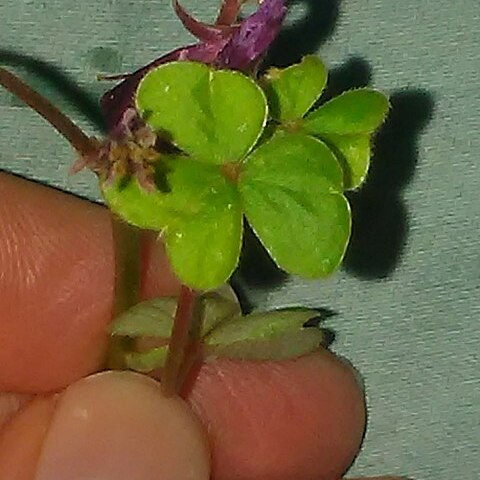Herbs perennial, acaulous, rhizomes and stolons absent, bulb solitary or clustered, <5–20 × 5–17 mm>; outer bulb scales 5–8[–13]-nerved, <margins ciliate, inner scales thick, orangish>. Leaves basal; petiole <often purplish proximally>, 3–13[–20] cm, <glabrous [sparsely and finely strigose]>; leaflets 3, light green, obdeltate with rounded angles, [2–]10–21[–32] mm, lobed 1/10–1/20 length, <lobes apically shallowly convex to nearly truncate, margins glabrous or sparsely irregularly ciliate, hairs loose, fine>, abaxial surface sparsely but evenly strigose, adaxial surface glabrous, oxalate deposits absent. Inflorescences umbelliform cymes, 1(–2)[–5]-flowered; scapes 14–17[–30] cm, glabrous. Flowers apparently tristylous (mid-styled flowers observed); sepals <purplish>, apices without tubercles, <surfaces glabrous>; petals violet-purple, with dark purple veins proximally, 18–20 mm. Capsules narrowly cylindric, 15–22 mm, indumentum not seen.
A herb. The flowers are purple.

